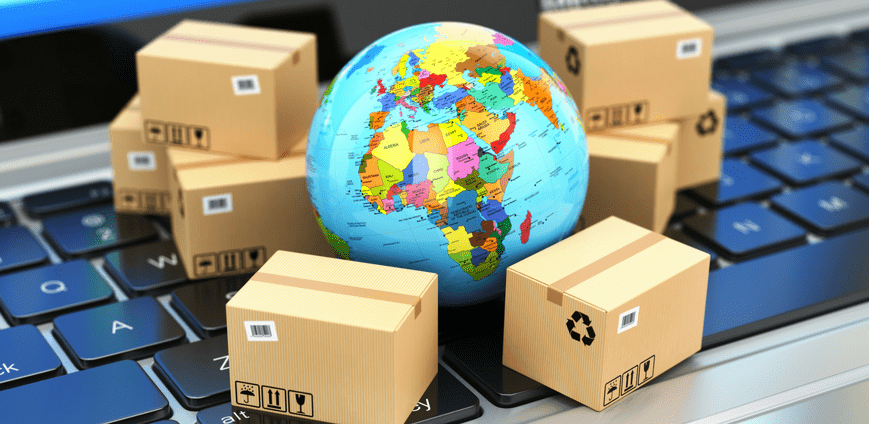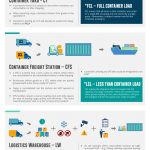With global revenues reaching US$1.915 trillion in 2016, it’s clear that e-commerce can be a lucrative endeavor! However, as you grow your domestic business, you may find yourself encountering saturated markets, with competition from local competitors becoming fiercer. – Soon, you won’t be the only retailer of cat-themed pool equipment in your target market!
At this point, there is one logical solution – go global. Entering the international market provides a broad range of benefits.
Rapidly scaling the scope of your business will allow you to maintain the core of your operation in your home country while serving other regions, thus increasing your potential market. The other option here is to individually target countries by replicating your business in other regions, either directly or through franchising.
An additional benefit to internationalization means that you aren’t wasting resources and effort trying to reach the same customers in your existing market. Instead, you can gain access to entirely new consumers who otherwise wouldn’t have been accessible.
Finally, by selling overseas, you can take advantage of the shifting purchasing patterns of different countries, and possibly target higher-value customers at a lower price to your business.
However, it’s not as simple as flipping a switch and saying “Ta-da!… I’m international now!” If you want to sell your products across the globe, you need to make specific preparations. In this blog entry, we take a look at some important ways to get your e-commerce business ready for the international market.
1.Have a Variety of Payment Methods

Credit cards and payment processors like PayPal are all well and good, but that’s not how everyone around the world does business. Some countries prefer bank transfers, direct debit, and other systems. Various regions have their own localized payment processors, for example, PayMaya in the Philippines, and SmoovPay in Singapore. There are also mobile schemes like Apple Pay and Google Wallet, or payment methods that travel through mobile carriers.
Consider increasing the variety of payment systems you offer to customers, so that you can expand the audience who can purchase from you. This might increase complexity, especially if you offer something like bank transfers, but the widened reach could be worth it.
2.Prepare for International Shipping

To provide your new international customers with accurate expected delivery times, you need to research how long it will take to ship products to each country you plan on supporting. You also need to know your landed cost – the total cost of having your items arrive at your customer’s door. This will include taxes, customs fees, and shipping charges. Customers do not want to be caught out by unexpected charges and taxes!
Certain carriers offer tools that help you to calculate landed costs, so see if your chosen shipping partner can help manage your international calculations. Depending on your volume, you may be able to negotiate better rates.
You can organize all of this yourself, or you could consider working with a third-party logistics provider that can streamline the process for you; taking care of all inventory processing, order fulfillment, labeling, customs paperwork, and shipping, whether domestic or international.
3.Consider Local Taboos and Norms
Local attitudes and cultural differences between international markets can catch unwary e-commerce businesses off guard. Many things can be perceived differently around the globe, and all it takes is one mistake to get your e-commerce business under fire and damage your reputation.
When you plan an international business expansion, you need to investigate and avoid any potentially offensive regional prohibitions and taboos. Remember; it’s not just your products themselves that can cause issues. In fact, it’s more likely to be your branding, messaging and product names that lead to problems. – A classic example comes from hair care company Clairol, who marketed their “Mist Stick” curling iron in Germany, without realizing that the word “mist” was slang for ‘manure.’ As you can imagine, this caused something of a stink…
Another example of a local custom that can catch out unsuspecting retailers is specific to packaging in China – having yellow wrapping with black text is only considered appropriate when giving gifts to the departed. Red is a more acceptable color, as it symbolizes luck.
Speaking of luck, Google does a fantastic job of adapting its “I’m feeling lucky” copy into different languages for its localized websites. – Luck is a familiar concept in the Western world, but it can clash with sacred beliefs in more conservative and religious nations. Google realizes this and changed their copy to “I trust in God” for its Pashto-speaking web users in Afghanistan, amongst other countries.
4.Introduce Regional Shops
Major online retailers like Amazon and Lazada have region-specific stores across different countries. By doing this, you can display and process payments in local currencies and segregate products that are available for shipping to that country. This will help introduce customers to your store and make shopping that much easier. From an operational viewpoint, you can implement both region detection and a regional drop-down box that your customers can use to select their country manually.
Think about allowing your shoppers to browse your site in their native language. At the end of the day, the more familiar and enjoyable their shopping experience, the more inclined they will be to buy from you. That said; make sure that your design language and branding remain the same across all local stores. You want to tell a consistent design story no matter who you’re selling to!
5.Localize Your Marketing

Are you tired of hearing about localizing yet? Well, if you haven’t figured it out, localizing is really important! This extends to marketing as well. Don’t just assume that the ads you use for your domestic audience will be equally as effective in other regions. (Remember the idea of understanding local customs and culture?) You’ll need to take the time to research audience segments for your new regions, looking to see if there are variations in interests and consumer behaviors that can aid you in targeting your new campaigns. It sounds obvious, but improved advertisement targeting will enhance click-through rates, leading to more traffic to your store, as well as increasing your brand visibility.
One of the most crucial steps you can take when localizing your marketing strategy is consulting an in-country marketing expert or a team member based in that country. If you don’t gather sufficient local data, problems will arise. Just ask multinational consumer electronics giant, Best Buy…
The company, famous for their big box retail stores in the U.S., encountered problems expanding into China because their marketing strategy failed to perceive cultural preferences that went against their usual business model. – In cities like Shanghai, it’s extremely problematic to find the kind of large retail spaces that Best Buy is familiar with. More importantly, local customers prefer a smaller range of goods that are in high-demand. This didn’t match the company’s sprawling store layouts, full of multiple product options. Best Buy ultimately shut down their China stores in 2011.
6.Look at Regional Opportunities to Increase Sales
The US-specific, ‘Black Friday’ event generated over $3 billion in online sales alone in 2016. The week-long Diwali festival in India produced over $1 billion in e-commerce revenue in the same year. China’s Singles’ Day produced $17.8 billion in sales for Alibaba over 24 hours on November 11, 2016. See the pattern? Specific dates can mean massive retailing opportunities in different countries!
Consider marketing around important holidays or events, such as the above shopping extravaganzas, or perhaps local Independence Day or Founding Day sales. These regional celebrations can factor into your localized marketing campaigns as well.
Ready to Go Global?
International expansion requires a logistics platform that’s ready to handle whatever you need – that’s where TDS Logistics comes in! With managed warehouses, round-the-clock security, and flexible fulfillment strategies, TDS ensures your products are properly picked, packed and delivered. If you’d like to know more about TDS’ seamless international logistics solutions, contact our expert team, today.







